Foot and Leg Pain Centre
Leading Children's Podiatrists Northmead
Helping little feet thrive with care
Paediatric Podiatrist
Does your child often feel pain in their feet or legs?
As the owner and Certified Sports Podiatrist at the Foot and Leg Pain Centre near Northmead, Dr Angus Chard PhD has a particular passion for children’s podiatry. His Doctorate in Lower-Limb and Foot Musculoskeletal Medicine, with a focus on Paediatric and Sports Injuries, makes him highly qualified in treating children’s foot and leg conditions. Dr Chard oversees every treatment at the clinic, ensuring that his team of podiatrists, who also prioritise children’s podiatry, deliver exceptional care tailored to young patients.
Paediatric Podiatrist Northmead
Recognising that medical visits can be overwhelming for children, we prioritise making the environment as comfortable and inviting as possible. Our goal is to replace fear with reassurance and deliver the highest level of care to each little patient.
Michael Chard, a Licensed Service Dog, provides incredible comfort and emotional support with his gentle scratches and cuddles. His calm and loving nature helps reduce anxiety in children and brings peace to those who need it most.
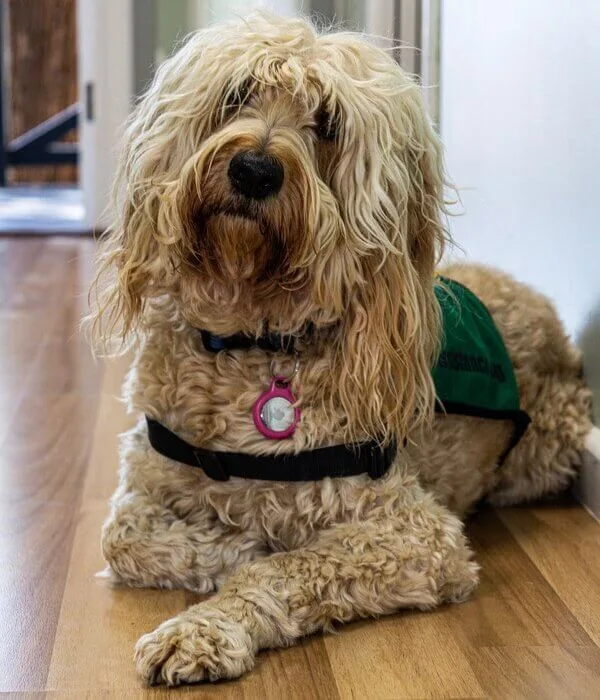
How We Support You
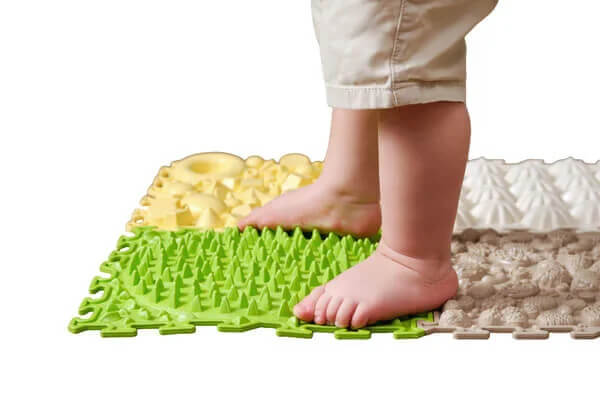
Flat Feet
Flat feet are frequently seen in young children after 18 months and generally resolve on their own. In certain cases, though, they may persist and cause long-term issues. Conducting an early assessment is vital, much like routine eye or dental checks, to detect and manage conditions early. Post-assessment, children can be monitored to ensure they grow out of any potential problems.
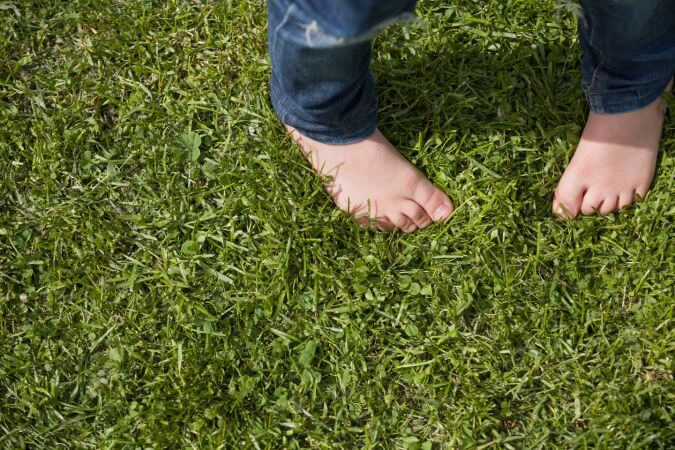
Intoe Walking
Pigeon toes, or intoe walking, frequently occur in young children and typically improve naturally by the age of 4. In cases where it continues beyond this point, it may cause instability, pain, or altered movement. Taking early action can promote healthy development and prevent future complications.
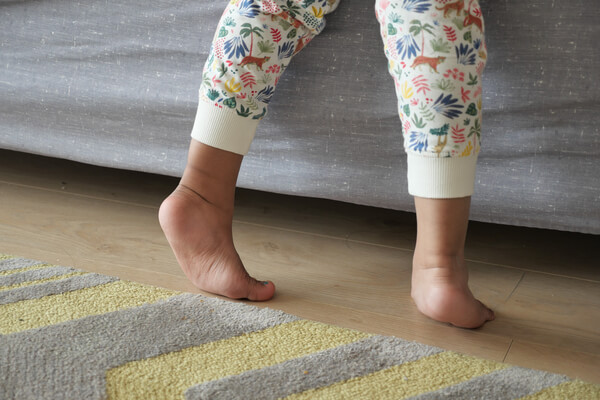
Toe Walking
Although toe walking is normal in toddlers, persistent cases beyond age 4 can indicate conditions such as tight muscles or neurological problems. If untreated, it may cause knee, back, or joint pain. Early assessment can help identify the cause, prevent future issues, and promote healthy movement.
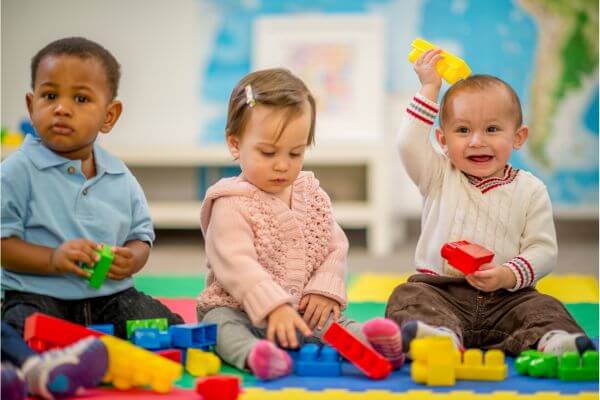
Late or Non Walkers
If a child is not walking by 18 months, it may indicate potential foot or leg issues. A podiatric assessment followed by regular measurements provides a foundation for monitoring healthy developmental progress.
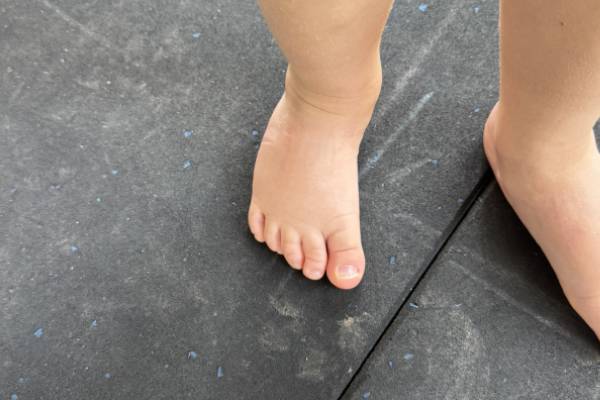
Banana Foot
Known as banana foot, metatarsus adductus results in a curved-in foot shape, usually due to pressure from the foetal position. While it often resolves on its own by age 4, addressing it early, ideally before age 2, is vital. Neglecting the condition can lead to structural abnormalities and chronic aches.
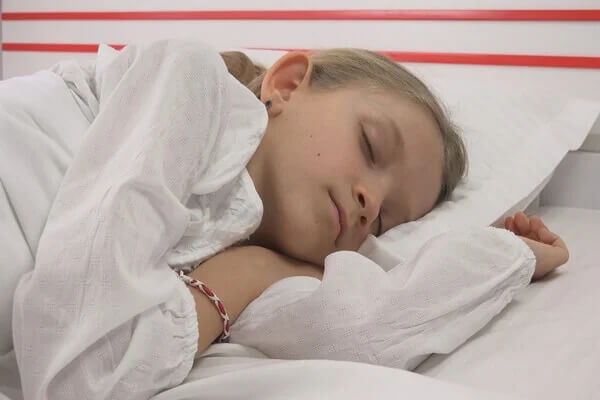
Growing Pains
While leg aches and pains are common after growth spurts, persistent pain beyond two months is widely recognised as abnormal. These symptoms can often be resolved when treated as muscle overuse syndromes. The outdated notion that growing pains are a natural part of development lacks evidence and should no longer be accepted.

Severs
Sever’s disease, common in children aged 7–12, causes heel pain during growth spurts. While it often affects active children, inactive children can also experience this condition. Fortunately, treatment for both groups is typically straightforward by addressing the underlying structural causes.

Vertical Talus
Flat feet, occasionally due to a vertically aligned talus (talipes calcaneovalgus), can affect children’s development. Although it often improves on its own, some cases persist into adolescence or adulthood, leading to reduced foot strength and potential complications. Identifying this condition early can help children meet milestones like climbing stairs and running.
Foot And Leg Pain Centre
Sydney's Trusted Children's Podiatrist
A toddler’s growing legs and feet experience many changes. Routine monitoring and measurements are key to identifying concerns early and providing appropriate care. Early detection is essential for healthy legs in adulthood — take steps to safeguard your child’s future well-being.
1-2 years
At this stage, we focus on tracking your baby’s development into a toddler, paying special attention to their foot structure and milestones like crawling, standing, and walking. Early intervention helps ensure healthy growth.
2-3 years
During this time, we assess your toddler’s early walking, posture, and balance, identifying issues such as excessively flat feet. With expert advice, we help foster healthy movement as your child explores and grows.
4-6 years
At this stage, we check for foot conditions like excessive flatness or gait irregularities, including in-toeing and toe walking. By supporting proper foot development, we help children move and play with assurance.
Paediatric Assessment
Support your child’s growing feet – book their podiatry appointment now.
Foot And Leg Pain Centre
Guiding your child’s journey to growth
As children grow, they may face leg discomfort, postural issues, or structural abnormalities. Addressing these early supports proper growth and helps them remain active alongside their friends.
At the Foot and Leg Pain Centre, we prioritise early intervention to encourage healthy growth.
Your First Visit
At the first appointment, we’ll carry out a thorough and enjoyable assessment of your child’s foot health, creating a stress-free and caring environment for both you and your child.
Treatment
We develop customised treatment plans designed to meet your child’s specific needs, focusing on strategies that encourage healthy foot growth and alleviate any discomfort.
Working Towards Your Outcomes
We aim to support your child in achieving optimal outcomes, helping them walk, run, and play with healthier feet and greater confidence while staying active and joyful.
Why Choose Us
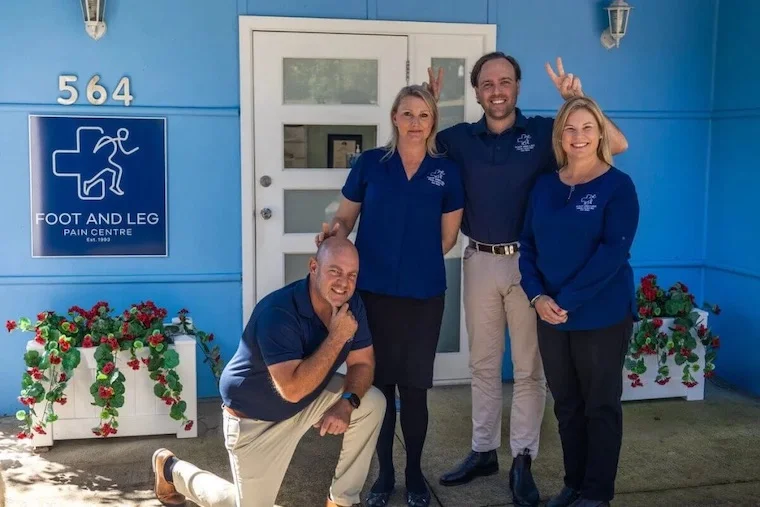
A Team You Can Rely On
Renowned worldwide, Dr Angus Chard, PhD, is a second-generation Certified Sports Podiatrist with a wealth of clinical experience, guiding a team of expert professionals.

Committed to Caring
The team at Foot and Leg Pain Centre is committed to supporting people, including children of all ages, in achieving their goals and alleviating their pain.
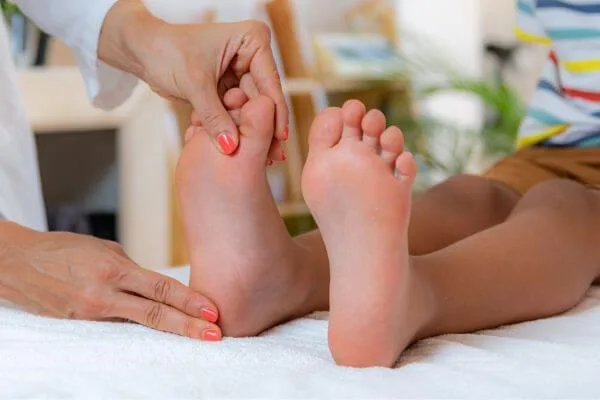
Evidence-Based Care
Along with our cheerful approach and knack for helping children feel comfortable, we deliver treatments that combine scientific evidence with clinical expertise. We offer clear information and treatment choices, ensuring a supportive and stress-free experience.
Helping Little Feet And Legs
We offer numerous treatment solutions at Foot and Leg Pain Centre. Your child’s specific care plan will be determined by the location, nature, and underlying cause of their pain.
Some children might benefit from 3D printed custom orthotics, while others may require follow-ups, footwear guidance, foot strengthening exercises, posture and biomechanical assessments, manual rehabilitation, or adjustments to their walking and running techniques.
Meet Our Founder
Dr. Angus Chard PhD
Dr Angus Chard PhD, Certified Sports Podiatrist and Founder of our centre, brings over 32 years of experience, dedicated to providing young patients with a blend of evidence-driven and effective care.
Support your child’s foot health for a happier future – book an appointment with Dr Angus Chard PhD or one of our trusted podiatrists near Northmead today.
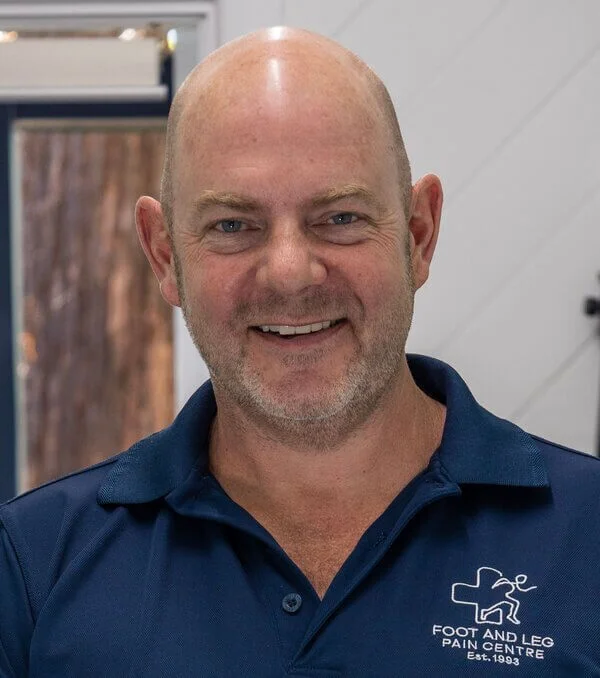
Meet The Team

Michelle Cuthbert
With over two decades of podiatric expertise, Michelle Cuthbert specialises in children’s foot health. A runner and mother of two young girls, she is passionate about the importance of early intervention and delivering tailored care to support children’s well-being.
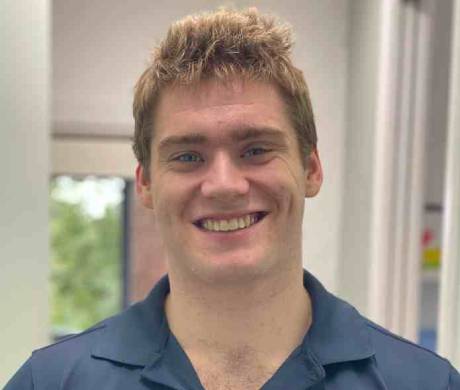
Thomas Shannon
Thomas Shannon is an experienced podiatrist and accomplished athlete with a focus on paediatric lower limb care. With a background in musculoskeletal strength, conditioning, and elite sports, Thomas offers exceptional care for young patients. He has represented Australia in hammer throw and Olympic weightlifting.
Foot And Leg Pain Centre
Book Now
Paediatric Assessment
Tiny feet deserve big care – schedule your little one’s podiatry appointment today.
Foot And Leg Pain Centre
Frequently Asked Questions
In certain cases, yes, but an initial assessment ensures their progress is monitored effectively. Ignoring issues could result in prolonged discomfort and missed treatment opportunities, as not all conditions resolve on their own. Podiatry can provide the support needed to prevent pain and promote healthy development.
It’s common for children to experience occasional activity-related aches similar to adults, but persistent tired, achy legs and feet are not normal. Persistent growing pains can be effectively managed by identifying and addressing the root cause of muscle overuse.
Children with flat feet often tire quickly during physical activities and may exhibit abnormal knee and ankle movements. Arch maturity is typically achieved by age eight, but 39% of adolescents with flat feet may experience knee pain, while 35% could develop hip or lower back pain. Since adult-like walking patterns mature by age four, ignoring abnormal foot positions can lead to retained walking styles like pigeon-toeing, bow-leggedness, or toe-walking into adulthood.
Early assessment is crucial for your child’s foot and leg health. During the first visit, we’ll conduct a thorough biomechanical assessment, gait analysis, and precise measurements. This provides a baseline for future monitoring, ensuring proper development. Even infants can experience foot and leg issues, so addressing concerns early with a skilled professional is essential.
No referral is required to book a podiatry appointment for any age or reason. Simply book online or call the practice, and we’ll collect all necessary details at your initial visit.
All parents should consider a foot assessment for their child, similar to routine eye and dental exams. If your child is experiencing discomfort, we can assist. Not sure? A thorough initial check-up will identify any concerns and recommend solutions. In emergencies, always call 000.
Children’s shoes should provide ample comfort, with proper length, width, and plenty of room for toes. Research shows that barefoot walking is best for developing feet, as it promotes healthier, stronger growth. The sensory connection with the ground stimulates muscle activity, aiding proper development, whereas even minimalist shoes can disrupt this feedback.
Selecting the right shoes for your child depends on the intended purpose. Barefoot-like, flexible footwear may suit some situations, while more supportive styles with different levels of support may be required in others. Look for shoes with flat, flexible soles that bend near the toes and a front wider than the heel. Secure fasteners such as laces or straps help keep feet comfortable and prevent slipping.
With Dr Angus Chard PhD at the helm, the Foot and Leg Pain Centre team combines expertise, qualifications, and partnerships with shoe retailers and manufacturers to assist you in navigating footwear options. For advice tailored to your child’s foot care, consult with our podiatrists today.
Yes, absolutely. However, we also understand the importance of balancing evidence with practical experience. Relying solely on evidence without context can lead to oversights. Below are references for the information shared on this page.
- Alfaro-Santafé, J., et al. (2021). “Effectiveness of Custom-Made Foot Orthoses vs. Heel-Lifts in Children with Calcaneal Apophysitis (Sever’s Disease): A CONSORT-Compliant Randomized Trial.” Children 8(11): 963.
- Bleck, E. E. (1983). “Metatarsus adductus: Classification and relationship to outcomes of treatment.” Journal of Pediatric Orthopaedics 3(1): 2-9.
- Chard, A., et al. (2011). Effect Thong Style Flip-Flop Footwear On Children’s Hallux Sagittal Plane Motion During Gait. International Society of Biomechanics, Brussels, Belgium, publisher.
- Chard, A., et al. (2012). “Effect of thong style flip-flops on children’s midfoot motion during gait.” Journal of Foot and Ankle Research 5(Suppl 1): O19.
- Smith, R., et al. (2012). “Biomechanics of footwear design.” Journal of Foot and Ankle Research 5(Suppl 1): I1.
- Chard, A., et al. (2013). “Effect of thong style flip-flops on children’s barefoot walking and jogging kinematics.” Journal of Foot and Ankle Research 6(1): 8.
- Chard, A., et al. (2015). Effect of thong style flip flops on children’s sidestep kinematics International Society of Biomechanics in Sport, Poitiers, France, Sports Biomechanics.
- Chard, B.A., The effect of unsupportive and supportive footwear on children’s multi-segment foot dynamics during gait. 2017. USYD Thesis – DOWNLAOD HERE http://hdl.handle.net/2123/18659
- Gijon-Nogueron, G., et al. (2016). “Establishing normative foot posture index values for the paediatric population: A cross-sectional study.” Journal of Foot and Ankle Research 9(1): 1.
- Kothari, A., et al., Are flexible flat feet associated with proximal joint problems in children? Gait and Posture, 2016. 45: p. 204-210.
- Lin, C.-J., et al., Correlating factors and clinical significance of flexible flatfoot in preschool children. Journal of pediatric orthopaedics, 2001. 21(3): p. 378-382.
- Mauch, M., et al. (2008). “Foot morphology of normal, underweight and overweight children.” International Journal of Obesity 32(7): 1068-1075.
- McKay, M. J., et al. (2015). “1000 Norms Project: protocol of a cross-sectional study cataloging human variation.” Physiotherapy.
- Mickle, K. J., et al. (2006). “The feet of overweight and obese young children: Are they flat or fat?” Obesity 14(11): 1949-1953.
- Mudge, A. J., et al. (2014). “Normative reference values for lower limb joint range, bone torsion, and alignment in children aged 4-16 years.” Journal of Pediatric Orthopaedics Part B 23(1): 15-25.
- Redmond A, Crane Y, Menz H. Normative values for the Foot Posture Index. Journal of Foot and Ankle Research. 2008;1(1):6.
- Sanders, R., Orr, R., Chiu, C., Chard, A., Tompsett, C., Fleeton, J., Davies, T., Fong Yan, A. (2018). Development of talent of adolescents in Australian sports high schools. In Pedro Morouço, Portugal: ESECS/Instituto Politcnico de Leiria.
- Staheli, L., et al. (1985). “Lower-extremity rotational problems in children. Normal values to guide management.” J Bone Joint Surg Am 67(1): 39-47.
- Sutherland, D. H. (2001). “The evolution of clinical gait analysis part l: kinesiological EMG.” Gait & Posture 14(1): 61-70.
- Sutherland, D. H. (2002). “The evolution of clinical gait analysis: Part II Kinematics.” Gait & Posture 16(2): 159-179.
- Sutherland, D. H. (2005). “The evolution of clinical gait analysis part III – kinetics and energy assessment.” Gait & Posture 21(4): 447-461.
- Wegener C, et al. (2011). “Effect of children’s shoes on gait: a systematic review and meta-analysis.” Journal of Foot and Ankle Research 4(3).
- Wegener, C., et al. (2013). “Effect of sports shoes on children’s vertical jump performance and midfoot and ankle kinetics.” Footwear Science 5(SUPPL. 1): S58-S59.
- Wegener, C., et al. (2013). “Effect of sports shoes on midfoot power generation in children while walking and running.” Footwear Science 5(sup1): S55-S56.
- Wegener, C., et al. (2015). “In-shoe multi-segment foot kinematics of children during the propulsive phase of walking and running.” Human Movement Science 39: 200-211.
As an approved and audited NDIS provider, we welcome all patients, whether self-managed, agency-managed, or NDIS-managed. We value personalised care and recognise that some appointments may require additional time or specific accommodations. From touch sensitivity to mobility support, we are here to provide compassionate and experienced assistance.
We are trusted by thousands of happy patients and our results speak for themselves






Families in Dural, NSW, and nearby suburbs trust the Foot and Leg Pain Centre for paediatric podiatry. We serve patients from Westmead, Richmond, Arcadia, Bella Vista, Castle Hill, Cherrybrook, Galston, Glenhaven, Hornsby, Kellyville, Northmead, Norwest, Rouse Hill, Westleigh, Kenthurst, Parramatta, Seven Hills and more areas for paediatric podiatry. Secure your child’s appointment today!


